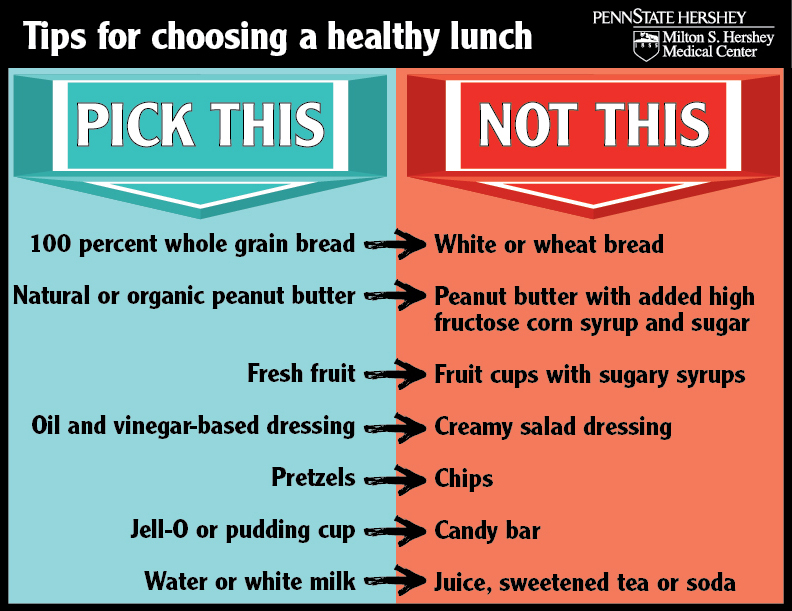The Medical Minute: How to pick or pack a healthy lunch for kids

With nearly one-third of American children now classified as either overweight or obese, it's more important than ever to leave the Lunchables on the supermarket shelf and pay attention to what kids are eating for their midday meal.
Dr. Marsha Novick, assistant professor of pediatrics and family and community medicine at Penn State Hershey, offers strategies for both those who prefer to pack and those who select options offered in the school cafeteria.
One in four children nationwide are considered to be “food insecure” – in other words, they don't know where their next meal is coming from. For those who receive free or discounted lunch, the midday meal at school may be the best bet for getting nutritious food.
Yet children left to their own devices can make unhealthy choices in the lunch line. So it's up to parents to educate their kids about what a healthy meal looks like.
Eating from the salad bar two or three times a week is great – as long as kids are selecting three or four different vegetables along with their lettuce base.
“A lot of times when they say they are having a salad, it's a bunch of Iceberg lettuce with bacon bits and cheese and egg and dressing dumped all over it,” Novick says. “That's not necessarily healthy.”
Adding a broth-based soup alongside a salad can also help kids feel full for the rest of the day. Students should bring a bottle of water to school and drink from it throughout the day – including at lunch.
Novick recommends that parents encourage their children to bring a bagged lunch from home two or three times each week, if possible. Include children in the shopping process so that the healthy items are ones that the child will eat and not throw into the school trash.
“When they pick out a fruit or veggie, they will be more likely to try it and eat it,” she says. “It is very hard to have energy for learning if they are missing meals.”
While pre-packaged meals such as Lunchables are extremely popular, Novick says they are high in preservatives, salt and processed carbohydrates. They also won't keep most kids feeling full through the end of the day.
“After an hour and a half or two hours, they're going to be hungry again,” she said. “I understand that things like that are easy, but they are also expensive and processed. It is much healthier and cheaper to do it yourself.”
Create a balanced meal that hits all food groups – fruit and vegetables, protein and grain. Even picky eaters can usually find something in each food group that they will eat. “It's a matter of being creative and knowing what your child likes,” Novick says.
The Medical Minute is a weekly health news feature brought to you by Penn State Milton S. Hershey Medical Center. Articles feature the expertise of Penn State Hershey faculty physicians and staff, and are designed to offer timely, relevant health information of interest to a broad audience.
If you're having trouble accessing this content, or would like it in another format, please email Penn State Health Marketing & Communications.

